Semantic Search Guide: What Is It And Why Does It Matter?
By Tessa Roberts
06/21/2023

Want to learn more about ecommerce site search and merchandising?
Discover more in-depth content here.
What Is Semantic Search?
Semantic search is a data searching technique which uses the intent and contextual meaning behind a search query to deliver more relevant results.
But what is semantics, exactly? Well, it refers to the philosophical study of meaning. (Pretty deep, huh?) Even though philosophy doesn’t always relate to software engineering, it does in this instance, meaning the definition helps us better understand the concept at hand.
Indeed, “semantic search” is synonymous with understanding your customer or buyer and is made possible through a combination of natural language processing (NLP) and machine learning (ML). In fact, these types of artificial intelligence make search results more comprehensive, seamless, and meaningful by understanding exactly what the prospect is trying to ask and what the user intent is behind the arrangement of keywords, as opposed to simply matching keywords to web pages.
- Semantic search is a data searching technique that uses the intent and contextual meaning behind a search query to deliver more relevant results.
- Semantic search adds a deeper level of understanding to search intent, as the algorithms continue learning through bounce rates, conversion rates, and other types of key information.
- Natural language processing helps your search bar understand your products on a deeper level, while machine learning uses data and trial-and-error patterns to enhance the user experience.
How Does Contextual Meaning Impact Semantic Search?
Most search intent can fall under the following categories: informational, navigational, commercial, or transactional. Being in commerce, your brand is most likely focused on the informational and transactional above all else.
It's up to your ecommerce business to link the intent behind a query to the context of a specific keyword or keyword phrase with your search engine. Humans rely on this very context in the real world when speaking and interacting.

If I were to ask you, “Do you like this article?", and then followed up with, “What do you like about it?”, you would know that “it” is referring to the article based on the direction of our conversation. The impact of context in our daily conversations is endless because it's often linked to what has been previously said or what followed.
The setting and time in which a conversation takes place, the background knowledge of those involved in the discussion, and the type of relationship that they have established all play a role in how we communicate with one another. Search is no different. Think of these contextual attributes as what semantic search is emulating. That's the reason why local restaurants appear when you type "restaurants" into Google. The context of who you are, where you are, and what you want are all understood by the search engine.
How Does Semantic Search Work?
Search relevance, or a search engine’s ability to match a page of search results to user intent, isn’t possible without semantic understanding. NLP helps your search bar understand your products on a deeper level, while ML uses data and trial-and-error patterns to enhance user experience.
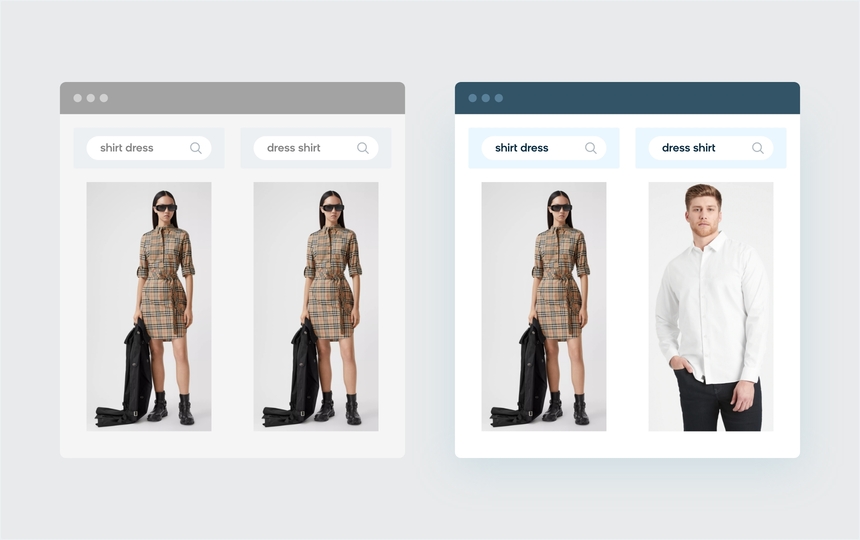
Again, semantic search adds a deeper level of understanding to search intent, as the algorithms continue learning through bounce rates, conversion rates, and other types of key performance indicators (KPIs). With a sharper understanding of search queries, these algorithms can boost user satisfaction and brand loyalty.
Why Does Semantic Search Matter for Your Users?
You want your customer or buyer to feel understood through the search experience. Semantic search works to ensure that they feel heard. While the end goal for any commerce business is to finalize a transaction (again and again), prospects cannot be made to feel as though that's the only emphasized aspect of the purchase journey.

Even though some customers will want to browse and explore search results, most want to find what they're looking for immediately. If they easily find the product or service — along with the information — they need, then they’ll use that extra browsing time on actionable steps that add up in a big way, such as discovering new products or services that speak to them or match their tastes. Your brand will experience more than just an increase in conversions with a lift in average order value (AOV) and revenue per visitor (RPV).
Semantic understanding also matters in terms of personalization or making every user's experience feel unique. For example, if a customer has shown interest in women’s clothing and searches for generic terms, like “tank top,” “swimwear,” or “running shoes,” an intelligent ecommerce search engine should return relevant results that take gender identity into account based on past search intent and history.

And if they make a typo in the search bar, semantic understanding will step in to identify the words and separate product types from their attributes, like colors, brands, and sizes. Since semantic search seeks to understand the customer above all else, red retail products should still appear even when misspellings (e.g., “rde” vs. “red”) occur, for example. At Bloomreach, we believe that site search should never feel like a chore, and that’s why you should leave it to the search engine to do the heavy lifting and maintain seamless purchase experiences
Why Is Semantic Search Important for Your Business?
Understanding semantic search is essential to drive conversions and revenue. Ultimately, providing a good search experience that’s rooted in a deep understanding of your prospect contributes to creating a no-nonsense digital experience that garners brand trust. Your customers will remember how efficient it was to shop on your website; in many instances, they will even convince them to come back.
When it comes to enterprise businesses and B2B distributors, in particular, you’ll need a search solution that can handle larger product catalogs. Implementing technology like Bloomreach Discovery will make your customer’s search experience more relevant and personalized, leading to revenue growth and fast return on investment (ROI).
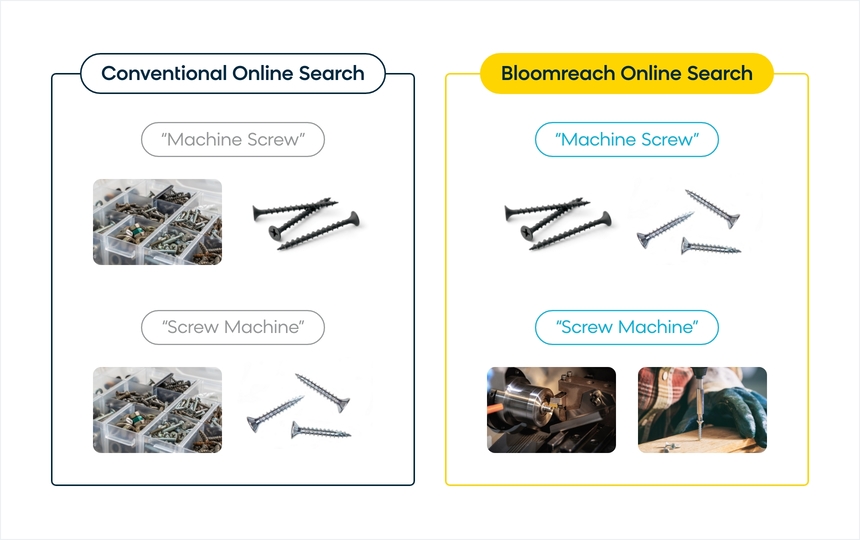
FAQs
What Algorithms Does Bloomreach Use to Improve the Search Experience?
We know better than anyone that the inner workings of semantic understanding are far from simple. Site search technology aims to simplify the approach with two algorithms: retrieval and ranking. While these algorithms aren’t unique to Bloomreach or even the commerce industry, they come together to create an effortless search experience that retrieves all relevant products and ranks them to maximize business impact.
Although we admit that most search vendors have a few similar capabilities in ranking optimization, no one does recall like Bloomreach. It’s the backbone of our highly relevant search results, which generate an immediate revenue lift across your entire product catalog. These algorithms are smarter today because of the learnings our AI has accumulated over the past decade across our vast experience in the market.

How Is NLP Used in Semantic Search?
Between all of the acronyms — AI, NLP, and ML — it can be difficult to understand exactly how semantic search is connected to AI as a whole. So, it is common for people to conflate them and ask, "Is semantic search AI?" and the simple answer is "yes." Semantic understanding consists of two main AI components: NLP and ML.
Semantic understanding will pick up on minor adjustments whenever word order changes and the meaning shifts, and your search bar can do its job properly. Remember that most search bars are looking to match keywords in the query, not grasp the intent behind the arrangement of keywords. Product discovery solutions that are used to optimize your site’s experience need to be as knowledgeable as your top merchandiser, or your prospect will hop over to your competitor.
Does Semantic Search Impact Search Engine Optimization?
In some ways, ecommerce experts of the past, pre-semantic search had a rather simple task. They needed to stand up the store online, direct traffic to the website via search engines, and essentially get customers from “point A” to “point B” to make a purchase. Nowadays, there are way more intricacies to shopping online.
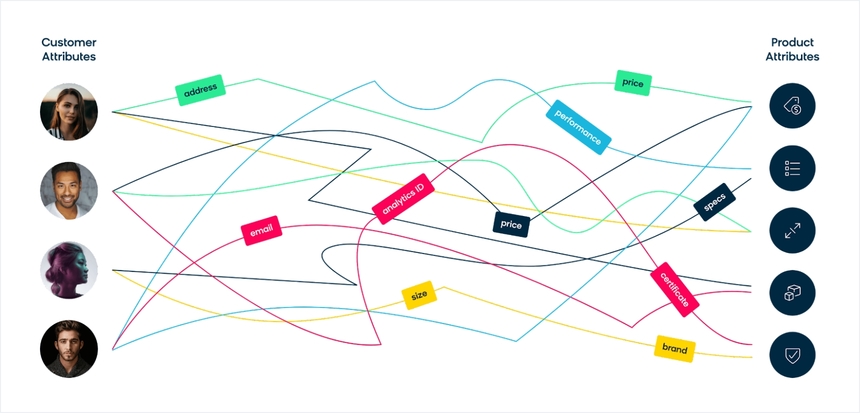 Today, advancements in online shopping (and in turn, site search) mean that the dotted line between point A and point B is not as simple. Since customer journeys are anything but linear, you’ll need a search bar to understand the meaning behind a query; otherwise, you’ll risk losing your prospect out of frustration. Not only does Bloomreach Discovery boast a smart search bar and merchandising insights, but our search engine optimization (SEO) module can also be added to any package. This way, you’ll never miss out on lucrative keyword rankings or have trouble making your site discoverable to customers or crawlable to search engine results pages (SERPs).
Today, advancements in online shopping (and in turn, site search) mean that the dotted line between point A and point B is not as simple. Since customer journeys are anything but linear, you’ll need a search bar to understand the meaning behind a query; otherwise, you’ll risk losing your prospect out of frustration. Not only does Bloomreach Discovery boast a smart search bar and merchandising insights, but our search engine optimization (SEO) module can also be added to any package. This way, you’ll never miss out on lucrative keyword rankings or have trouble making your site discoverable to customers or crawlable to search engine results pages (SERPs).
How Does Site Search Relate to Commerce?
With an increasing amount of site search technology available on the market, the “search standard” has reached a new peak. Your average user has an evolved set of expectations and needs unmatched accessibility to the information they want. Think about it: how we buy things in real life is often based on the asymmetry of information between buyers and sellers. Online shopping should be no different.
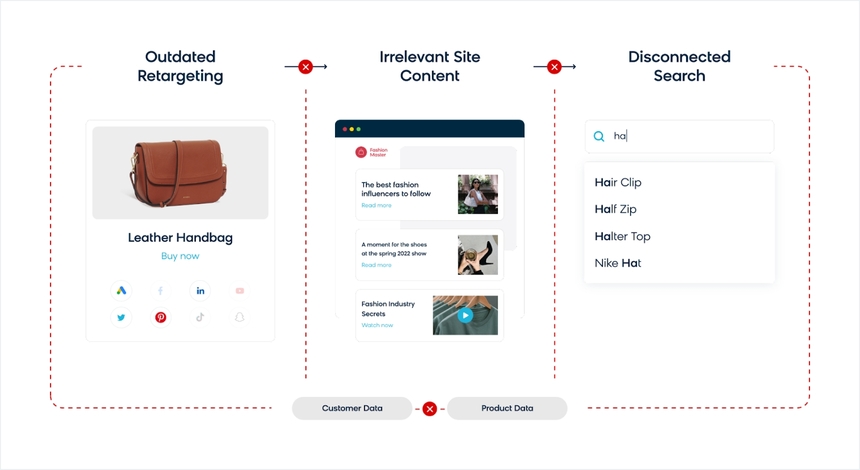
When it comes to modern commerce, it’s clear that the customer is now the one who has the power, and artificial intelligence and machine learning are responding to fulfill the searcher’s intent and keep them happy when shopping online. By eliminating frustrations during the product discovery process, it will be easier for the average shopper to find exactly the product they want at the price they are willing to pay for it — increasing your brand’s conversions and revenue.
Can Bloomreach Help My Brand With Its Search Problem?
Semantic search is one of the key elements that created the new customer experience era. Now that the ball is in the customer's court, your focus should be on making their experience — online and offline — as simple, cohesive, and beneficial as possible.
Bloomreach Discovery is here to help, using natural language processing and machine learning to understand your customers' intent and create relevant suggestions. Optimized for RPV, Bloomreach offers the fastest ROI of any product discovery solution on the market — and we’re not afraid to prove it.
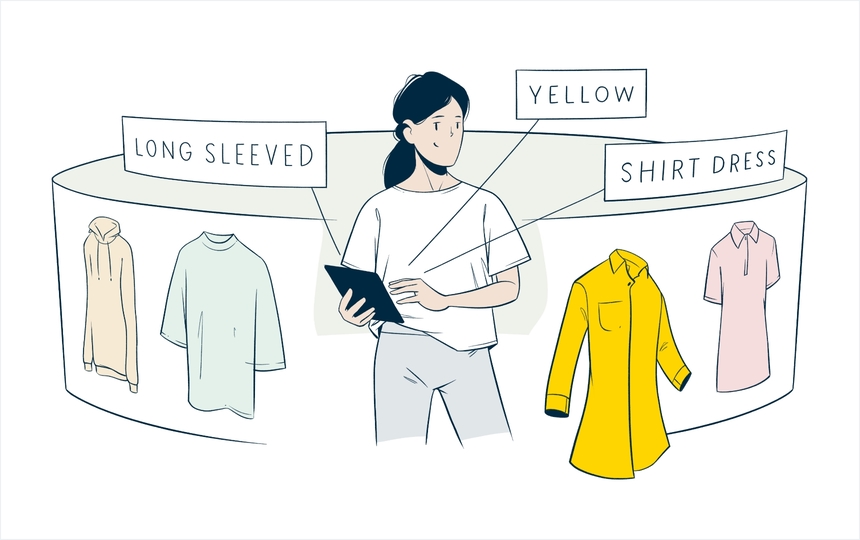
If you are wondering how our customers use Bloomreach Discovery, check out the customer success stories here:
N Brown Uses Bloomreach Across Its Brand Portfolio
The Vitamin Shoppe Boosts Add-to-Cart Rate and Search Revenue With Bloomreach
Found this useful? Subscribe to our newsletter or share it.






